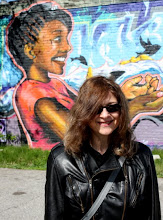 “A SOILED BABY, with a neglected nose, cannot be conscientiously regarded as a thing of beauty,” said Mark Twain. Beloved as they are, babies are not always adorable or even interesting — they are notoriously poor conversationalists, they don’t smoke, and they seldom give useful stock tips.
“A SOILED BABY, with a neglected nose, cannot be conscientiously regarded as a thing of beauty,” said Mark Twain. Beloved as they are, babies are not always adorable or even interesting — they are notoriously poor conversationalists, they don’t smoke, and they seldom give useful stock tips. Nonetheless, French producer Alain Chabat thought it would be a wonderful idea to make a documentary capturing the first year of life of four babies in different parts of the world, with music, no commentary and minimal dialogue — a sort of wildlife movie about human infancy. “I felt it could be an emotional experience,” Chabat says. “I dreamt of a movie theater audience that would applaud because a baby would stand on their own two feet.” Chabat enlisted Thomas Balmès to direct the movie, which, like its subjects, is alternately endearing, surprising, lovely and maddening. Its most interesting element, the ethnographic comparisons of child-raising practices and culture in Africa,
Digitally shot over a period of two years, followed by another two years of editing, the movie follows four families from the woman’s late pregnancy through their babies’ first year (three of the babies are girls because the “casting” was unpredictable.) The audience is introduced to Ponijaio of Namibia,
Babies’ beautiful cinematography caresses the plains of
Although Chabot claims the film makes no judgments about any of the families, there are certain implications in the editing. Following the very natural childbirths of Asian and African babies, we meet the American baby in a hospital setting, where newborn Hattie was being monitored for a breathing problem. The parents are almost comically “New Age,” with their parenting books, hot tub and Native American chanting circle. The film emphasizes the noisy chaos of
The idea is a lovely one, but unenhanced footage of babies cannot be considered a theatrical event. Even over its short 79-minute running time, the movie becomes as tiresome as your neighbor’s home movies. Midway through, audiences not besotted with the babyness of it all will relate to little Mari, who grows bored with her toys and pitches a solitary fit, lying on her back and kicking her tiny legs in utter frustration.
Originally published in Cleveland Scene, www.clevescene.com.

No comments:
Post a Comment